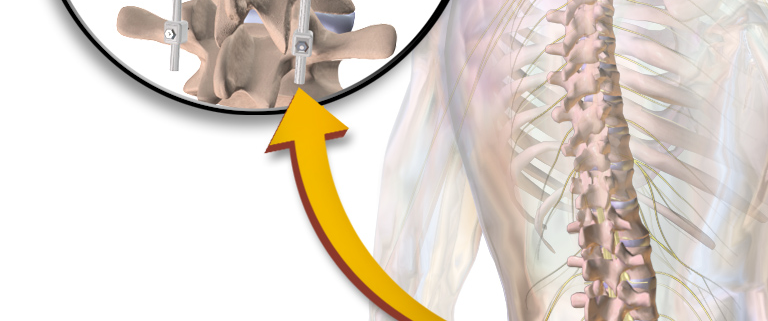
Posterior Lumbar Fusion
Overview
Posterior Lumbar Fusion, also known as PLF, is a surgical procedure aimed at relieving chronic pain in the lower back. The surgery connects two or more vertebrae in the lower part of the spine, or lumbar region, to enhance stability and alleviate discomfort. Statistics suggest that up to 80% of adults will experience lower back pain, with a significant number of such cases potentially benefiting from posterior lumbar fusion surgery.
Types
There aren’t different types of posterior lumbar fusion surgery, but it’s important to note that it can be carried out using various techniques. These can include:
1. PLIF (Posterior Lumbar Interbody Fusion) - The fusion is done through the back and includes removal of the disc between two vertebrae before inserting bone into the space.
2. TLIF (Transforaminal Lumbar Interbody Fusion) – Similar to PLIF, but involves removing and replacing the disc with bone from the side, reducing the risk of nerve damage.
Causes
Posterior lumbar fusion surgery is usually recommended if you have been diagnosed with:
– Degenerative disc disease: This refers to changes in your spinal discs as you age which cause pain.
– Spondylolisthesis: A condition where one bone in the back slides forward over the bone below it.
– Lumbar stenosis: This involves narrowing of the spinal canal causing compression of the nerves.
– Recurrent disc herniation: Where a spinal disc becomes compressed and bulges outward.
Symptoms
Your healthcare provider may recommend PLF if you’re experiencing one or more of the following symptoms:
– Severe lower back pain
– Pain which spreads to the buttocks, legs, and feet
- Difficulty walking or standing for long periods
– Numbness, tingling or weakness in the legs
– Non-surgical treatments like physical therapy and medication have failed to relieve your symptoms
Diagnosis
To diagnose the conditions that may warrant a posterior lumbar fusion, your doctor may:
– Review your medical history
– Conduct a physical examination
– Request imaging tests such as CT scans, MRIs, or X-Rays
Treatment Options
Posterior lumbar fusion surgery is typically reserved for when non-surgical treatment options have failed to alleviate the conditions causing chronic lower back pain. Non-surgical treatments can include:
– Physical Therapy
– Anti-Inflammatory Medications
– Pain Management
– Weight Management
Patients who don’t respond to such conservative treatments may consider PLF. This surgical procedure aims to stop movement between the painful vertebrae, reducing the pain in your lower back.
Living with Posterior Lumbar Fusion
Post-surgery life involves patient adherence to a recovery plan including:
– Physical Therapy: This helps restore your strength and mobility.
- Pain Management: Using prescribed medications to manage discomfort during recovery.
– Lifestyle Changes: Including maintaining a healthy weight, exercising, and quitting smoking if applicable.
When to Seek Help
You should seek immediate medical attention if you experience:
– Significant increase in pain
– Difficulty in controlling bowels or bladder
– Fever or infection symptoms
– Loss of sensation or strength in your legs
Remember, every patient’s experience with this condition and procedure is unique, and it’s crucial to stay in close contact with your healthcare provider throughout the process. Having an open and continuous dialogue will enhance your understanding and assist your health team in creating the best treatment approach for you.
